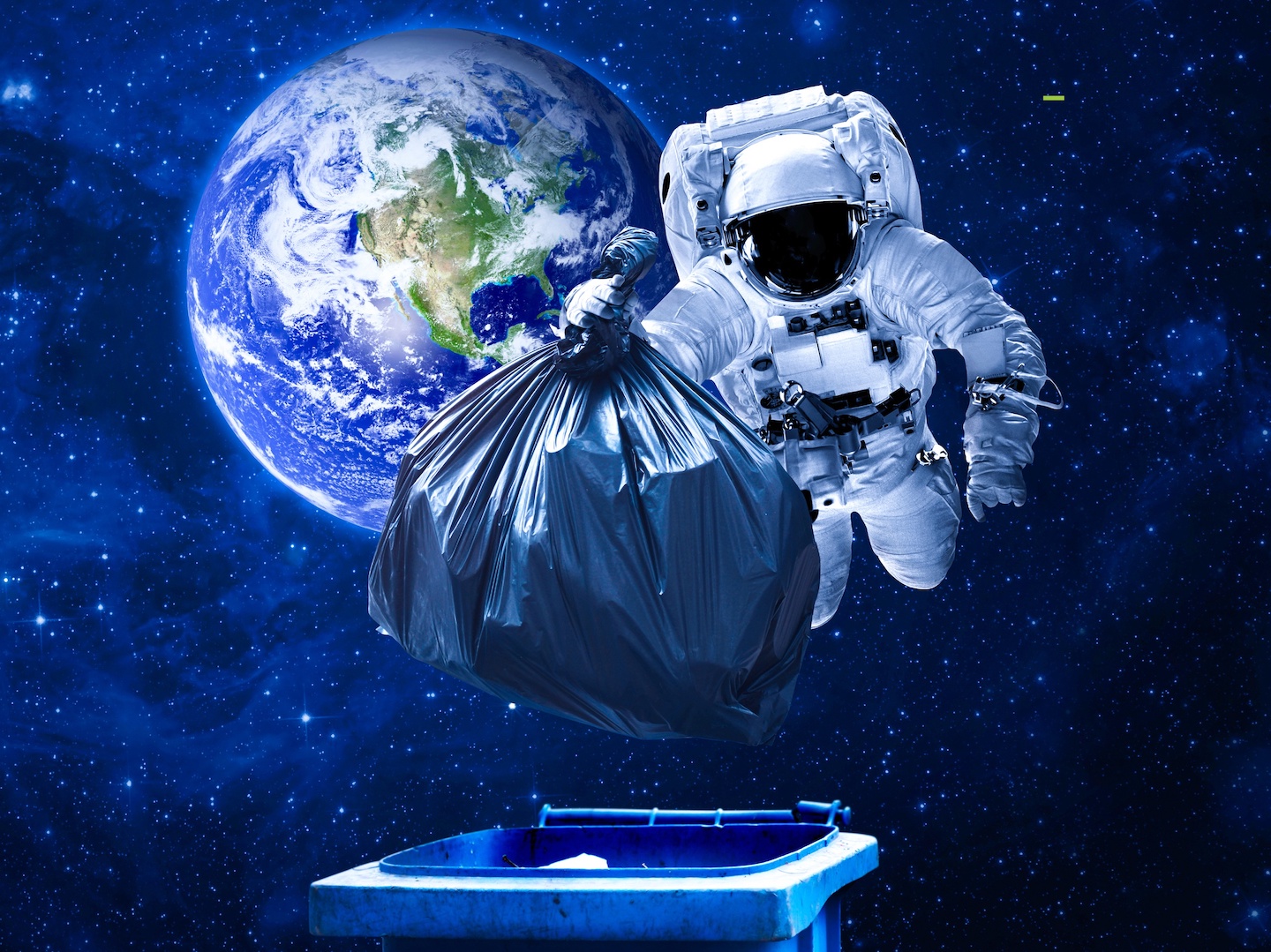Latest News

Via Satellite archive photo.
Space sustainability is becoming an undisputed necessity. However, not everyone agrees yet on the how, nor does everyone believe in the viability of a commercial market for space safety, security and sustainability – the 3S’s of space. Despite Morgan Stanley, and others, estimating that the revenue generated by the space situational awareness (SSA) market alone could reach $1.5 billion by 2027.
Some go as far as vocally defending the short-sighted position of “Why should I pay for cleaning up someone else’s mess?” Only recently the thought was shared with me that we don’t have to worry about space safety because the military will fully finance it due to their need for space to guarantee national sovereignty.
Certainly, assessing the impact of space activities is a complex and difficult task. However, it is also true that the message of environmental responsibility has been the prevailing if not the only message associated with the 3S. In its second edition of the Handbook on Measuring the Space Economy, the intergovernmental Organisation for Economic Co-operation and Development (OECD) states: “the unintended negative effects of space programs are rarely treated in space economy impact assessments.”
Not only is the impact of increased space activities not addressed from an economic perspective, the economic opportunities and markets are also left unexplored.
So, what are we waiting for, why aren’t we there yet and why miss out on significant commercial opportunities?
To fully realize the economic benefits, it is essential to understand the niche markets, needs, drivers, and technologies within SSA that hold the greatest economic potential. This includes identifying the beneficiaries beyond satellite operators, the importance of private and governmental space efforts, and the significance of increased investment from the public sector.
Economic Drivers and Niche Markets
In 2022, Euroconsult estimated the value of the space economy to be $464 billion. If only 1% of this were dedicated to sustainability, safety and security, it would already amount to $4.6 billion today.
In contrast, in 2021, Facebook said it had spent over $13 billion on “safety and security” since 2016, that’s $2.6 billion on average per year. In 2021 EU countries had on average a 1.5% spending on public order and safety, while U.S., Chinese, and Russian spendings go far beyond. Those figures show the potential for global SSA market estimates.
In the short-term, standing to gain the most economically from this market, in addition to satellite operators with better asset protection and insurance providers with better premiums, are businesses specializing in: SSA and STM (space traffic management) technology, data mining, fusion and analytics, debris mitigation, collision avoidance, debris tracking, and space weather analysis. As the demand for SSA services rises, we will see a lot more business activity in these specialty areas. Further in the future, as spacecraft become more autonomous, SSA and STM will become an intrinsic part of operations.
Driving these markets is an increase in satellites and space activities, making Earth’s orbit more congested. In 2022, operational satellites increased by more than 45% to over 7,000. And a new report by research and consulting firm Quilty Space predicts that around 20,000 new satellites will launch by the end of 2030. Their estimates are focused on satellite projects that are likely to come to fruition, as opposed to forecasts counting planned constellations. Figures for the latter would see up to half a million satellites in space by the end of the decade. Estimates related to these figures suggest that the already witnessed increase of conjunction by a factor of five in certain critical orbits will only increase. This requires new technologies, regulatory frameworks, and above all new public-private collaboration formats.
Public-Private Roles
The tracking of resident space objects and the analysis of potential conjunctions has traditionally been public-sector driven.
The question is whether this role distribution remains adequate. Partnerships between government organizations and the business sector can pool funds, resources, and experience to better handle the problems associated with the 3S. They are essential to promote innovation, cut expenses, and boost economic growth.
We must also consider new activities and how procurement of these activities is done. We can learn from similar experiences in telecommunications and launchers in many ways.
In space telecommunications, we have seen private investments accompany public sector investments in public-private partnerships indicating the belief of a market opportunity. These partnerships include satellite manufacturers collaborating with operators to ensure the immediate introduction of a new satellite bus, a new technology on the market, etc.
These public sector investments must be complemented with the acquisition by public sector actors acting as customers of data and services provided by commercial providers. Anchor tenancy by the public sector in new and emerging space markets is essential to secure the success of public sector expenditures as it stimulates private sector investments. A multiplier effect results. Anchor tenancy is the actual procurement of a service by the customer for its own use. SpaceX in the U.S. is a prime example for the impact and success.
Enhancing the collaboration between space agencies and commercial entities, nationally and internationally, can also lead to mutually beneficial outcomes, ultimately contributing to the growth of a sustainable space. To further promote such a cooperative and sustainable space environment, governments and space agencies should collaborate to set clear norms for responsible space activity, and encourage and enforce responsible practices.
Last year for example, the European Space Agency (ESA) introduced its Zero Debris Charter, a non-legally binding agreement that aims to foster a community of proactive actors. And in the U.S., the FCC issued a penalty of $150,000 to Dish for failure to properly deorbit its EchoStar-7 satellite, only a month after introducing a new regulation.
While penalties are important, governments also ought to provide financial rewards to businesses that implement ethical space practices, like environmentally friendly satellite architecture and debris clearance techniques.
Perhaps it is wishful thinking to believe that it is somebody else’s problem and that indeed this somebody else will take care of it. Instead, it would be wise to get a head start and advance key elements. By implementing and fostering the necessary changes, the correct legislative frameworks, and a dedication to ethical principles, the market for space situational awareness and associated markets will by far surpass the predicted $1.5 billion.
By also carefully balancing environmental responsibility with economic considerations, the space industry can work towards building a sustainable space economy that benefits both present and future generations.
 Chiara Manfletti is the CEO of Neuraspace and the Professor of Space Propulsion and Mobility at the Technical University of Munich. Prior to joining Neuraspace, Chiara headed the Policy and Programmes Coordination department at the ESA. At the early stage of her career, she worked for the German Aerospace Center, DLR, as a research engineer and later joined the European Space Agency (ESA) where she was the Programme Advisor to the Director General at the agency’s headquarters in Paris. She also became the first President of the then just founded Portuguese national space agency, Portugal Space.
Chiara Manfletti is the CEO of Neuraspace and the Professor of Space Propulsion and Mobility at the Technical University of Munich. Prior to joining Neuraspace, Chiara headed the Policy and Programmes Coordination department at the ESA. At the early stage of her career, she worked for the German Aerospace Center, DLR, as a research engineer and later joined the European Space Agency (ESA) where she was the Programme Advisor to the Director General at the agency’s headquarters in Paris. She also became the first President of the then just founded Portuguese national space agency, Portugal Space.
Stay connected and get ahead with the leading source of industry intel!
Subscribe Now